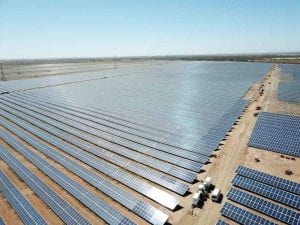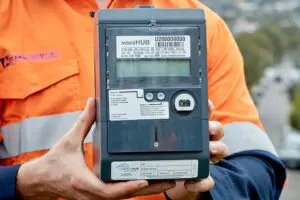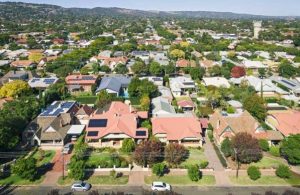Brookfield Asset Management is a global giant with assets of around $A1 trillion. Andrew Forrest, Mike Cannon-Brookes and Scott Farquhar are Australia’s three richest men. All are committed to accelerating Australia’s green energy transition. A shortage of capital is not the problem here.
Brookfield’s announced takeover offer for Origin Energy, leading a consortium bidding $18.4 billion for Australia’s biggest electricity utility, is another game-changing moment for the Australian energy industry.
Brookfield intends to flick Origin’s LNG assets to bid partner MidOcean Energy, and focus on the utility assets, with the promise of spending $20 billion on wind, solar and storage in the next eight years.
This will help meet the 82 per cent renewable energy share scenario laid out by the Australian Energy Market Operator in its Integrated System Plan, now embraced by the new federal government as its 2030 target, and it will also offer huge opportunities for Brookfield itself.
It’s a remarkable proposal. Australia’s green energy transition has been held back by a number of key factors – a federal Coalition government living in denial and the pocket of the fossil fuel industry, the influence and power of legacy companies, and rules and regulations that failed to keep up.
The deniers have gone
The Coalition government is gone, and the takeover of Origin, and the influence of Cannon-Brookes and potentially a new breed of independent directors at AGL, suggests that the legacy utilities will no longer be part of the problem.
What is holding up the energy transition is the ability of investors – even those with deep pockets like Brookfield and Australia’s home grown billionaires – to have confidence in the market.
“The issue (for the green energy transition) remains getting projects to FID (financial close),” says Simon Corbell, the minister behind the ACT’s transition to 100 per cent renewables, a former renewable energy advocate in Victoria, and now head of the Clean Energy Investors Group.
Corbell says the proposal from Brookfield shows that the weight of money is leading the policy and regulatory agenda, and the fact that a big “gentailer” such as Origin will now be fully committed to talking the clean energy transition book should help to accelerate the much needed market reforms.
“If we have gentailers talking the green energy transition rather than protecting incumbent assets, that’s a very welcome development,” Corbell told RenewEconomy.
Go slow tactics may come to an end
That comment will be met with agreement by most in the industry, who have witnessed the go-slow tactics and the weight of regulatory capture in a highly complex industry. The fact that the big utilities now want to go fast, rather than slow, is critical.
In a way, Brookfield’s joint bid for Origin makes more sense, or is at least might be an easier task, than the joint proposal for AGL that it lobbed with Cannon-Brookes late last year.
For a start, Origin’s assets are easier to split – LNG will go the way of MidOcean and presents no complications for the rest of the business. And Origin has already committed to closing its last coal fired generator, the 2.8GW Eraring facility in NSW, by August, 2025.
What Origin has not yet done – as ITK principal David Leitch has pointed out numerous times on RenewEconomy’s weekly Energy Insiders podcasts – is to commit to enough new renewables and storage capacity to replace the assets that are being closed.
Brookfield does not intend to fall into the same trap. And it sees the $20 billion it plans to spend by 2030 on new wind, solar and storage assets as a massive opportunity.
But Corbell says there are still key problems for investors surrounding the rules of the market, connection processes and congestion issues, despite federal Labor’s own $20 billion funding commitment to the Rewiring the Nation program.
New investment needs a good home
“Projects still need a good home,” Corbell says. “They need projects that are commercial, and they need the risks around approvals, connection, access to grid and congestion to be addressed.
“They remain big issues for renewable energy projects regardless of who owns it. There is no shortage of capital, it’s about converting projects from development status to committed status and it comes down to regulatory and policy factors.”
Corbell says there remains a number of key regulatory and policy issues that need to be resolved for storage, and the only real certainty is being provided with the renewable energy Zones in NSW, a key part of that state’s 10-year transition plan from coal to renewables.
“We are not asking for subsidies, we need to look at how generators can achieve a level of physical firm access to the grid over life of their project. Outside of the NSW REZs, there is no broader form of physical and firm access to NEM, but there needs to be.
“Investors need to know they can get their product to market. It comes down to how design the market and who gets to dispatch when.”










